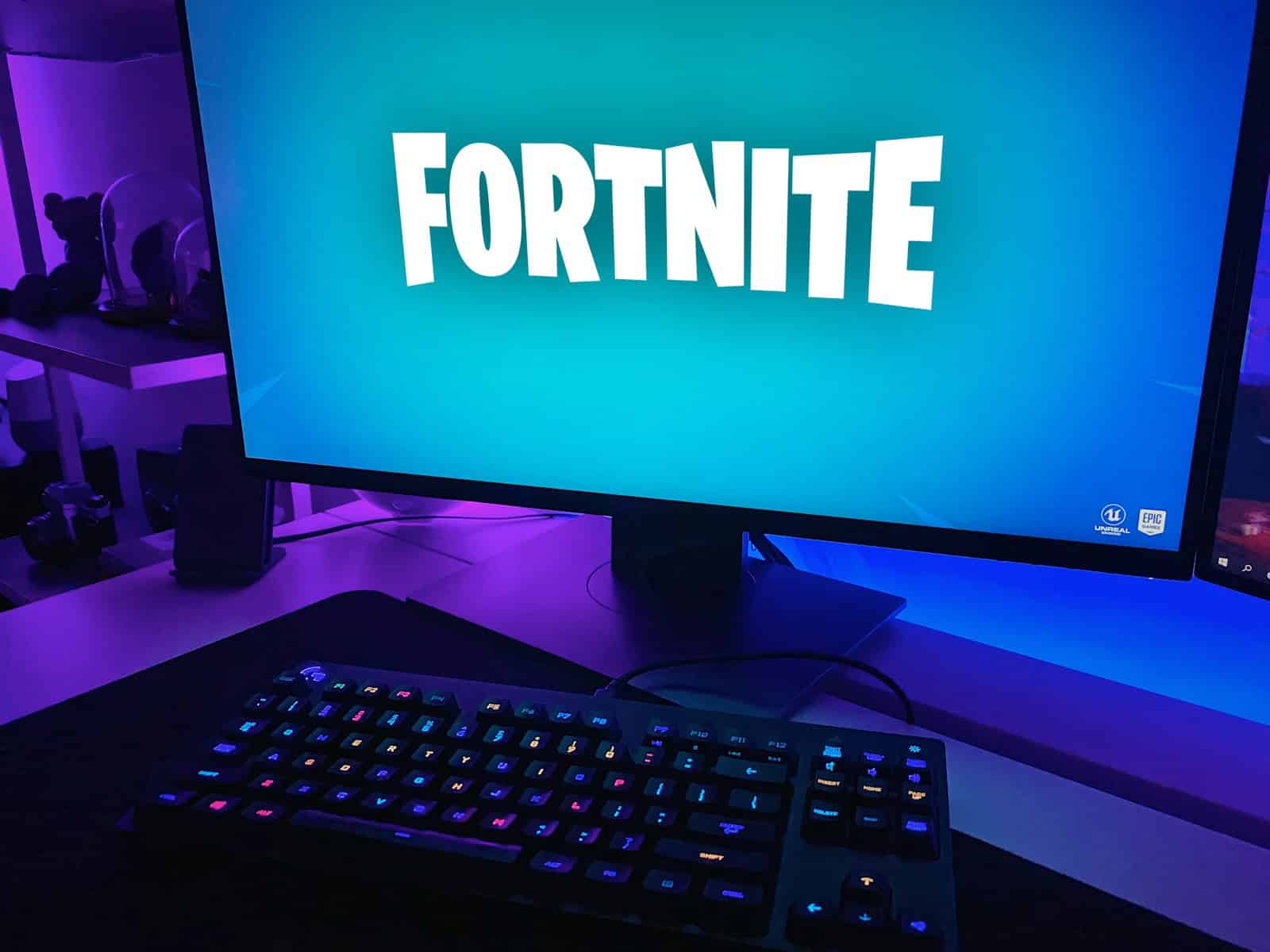Playing Fortnite with low frames per second (FPS) can ruin your gaming experience. Lag makes it hard to aim, build quickly, and react to enemy players. Lowering your 3D resolution to about 80% can significantly improve your FPS without sacrificing too much visual quality.
Getting better performance doesn’t always require expensive hardware upgrades. Simple adjustments to in-game settings can make a huge difference. You can boost your FPS by changing graphics options in the settings menu.
For serious players, combining software optimizations with hardware improvements gives the best results. While upgrading your GPU is effective, it’s not the only solution. Sometimes just closing background programs and updating drivers can help your computer run Fortnite much smoother.
Best Settings and Tweaks to Improve FPS in Fortnite

Improving your FPS (frames per second) in Fortnite can give you a smoother experience and a competitive edge. Whether you’re playing on a high-end gaming rig or trying to squeeze more performance from an older PC, the tips below can help you get the most out of your system.
In-Game Settings for Maximum Performance
Start by adjusting Fortnite’s graphics settings. Here’s a recommended setup for performance without sacrificing too much visual clarity:
| Setting | Recommended Value |
|---|---|
| Display Mode | Fullscreen |
| Resolution | 1920×1080 (native) |
| Frame Rate Limit | Unlimited or 240 FPS |
| 3D Resolution | 100% |
| View Distance | Near or Medium |
| Shadows | Off |
| Anti-Aliasing | Off |
| Textures | Low |
| Effects | Low |
| Post Processing | Low |
| V-Sync | Off |
| Motion Blur | Off |
| DLSS / TSR | On (only if on RTX card) |
| NVIDIA Reflex | On + Boost (NVIDIA only) |
Windows and GPU Optimizations
To truly maximize performance, you’ll want to fine-tune your system outside of the game too.
1. Update GPU Drivers
Always keep your graphics card drivers up to date. Both NVIDIA and AMD optimize drivers regularly for Fortnite.
2. Power Settings
- Set your PC’s power plan to High Performance or Ultimate Performance in Windows.
- On laptops, make sure you’re plugged into a power source.
3. NVIDIA/AMD Control Panel Tweaks
For NVIDIA users:
- Set “Power management mode” to Prefer maximum performance
- Set “Low Latency Mode” to Ultra
- Disable Vertical Sync
For AMD users:
- Enable Radeon Boost
- Set Texture Filtering Quality to Performance
Clean Background Processes
Fortnite is CPU-intensive, especially in build fights and endgames. Freeing up system resources can give you a big FPS boost:
- Disable startup programs (Task Manager > Startup tab)
- Close background apps like Chrome, Discord overlays, or game launchers
- Turn off Xbox Game Bar and unnecessary Windows notifications
Use Performance Mode (Beta)
Fortnite offers a Performance Mode that drastically reduces GPU load and memory usage. It’s ideal for low-to-mid-tier PCs:
- Go to Settings > Video > Rendering Mode
- Choose Performance (Beta)
- Restart the game to apply
This mode replaces high-quality textures with simpler ones and can boost FPS by 20–50% depending on your hardware.
Hardware Upgrades That Matter
If you’ve already optimized your settings and still need better FPS, these hardware upgrades offer the most noticeable improvements:
| Upgrade | Impact on FPS | Notes |
|---|---|---|
| GPU (Graphics Card) | 🔼🔼🔼 High | Get at least an RTX 3060 or RX 6600 XT |
| CPU | 🔼🔼 Medium | Look for high single-core performance |
| RAM | 🔼 Medium | 16GB is optimal; dual-channel preferred |
| SSD | 🔼 Small | Reduces loading times, less stutter |
| Monitor (High Hz) | 🔼 Smoothness boost | 120Hz+ monitors help take advantage of high FPS |
What Kind of FPS Should You Expect?
Here’s a rough idea of what different system levels can deliver in Fortnite on Performance Mode:
| Hardware Tier | Estimated FPS (1080p) |
|---|---|
| Budget (GTX 1650, i3) | 60–90 FPS |
| Mid-range (RTX 3060) | 120–180 FPS |
| High-end (RTX 4080) | 200–300+ FPS |
Optional: Overclocking (Advanced Users)
If you’re comfortable with hardware tuning:
- GPU Overclocking: Tools like MSI Afterburner can squeeze extra performance
- RAM Tuning: Enabling XMP in BIOS can boost RAM speeds
- CPU Undervolting/Overclocking: Can lead to better thermals and smoother performance
Just make sure to monitor temps and stability. It’s not required—but can help experienced users push FPS even further.
Key Takeaways
- Reducing 3D resolution to 80% offers a good balance between visual quality and performance
- Adjusting in-game graphics settings can boost FPS without hardware changes
- Regular driver updates and closing background applications improve overall system performance
Optimize In-Game Settings for Maximum FPS
Finding the right in-game settings can dramatically improve your Fortnite performance. Adjusting these options will help balance visual quality with smoother gameplay.
Adjust Graphics Quality Settings
Lowering your graphics settings is the fastest way to increase your FPS in Fortnite. Start by reducing your 3D Resolution to around 80%, which provides a good balance between quality and performance.
Set these graphics options to improve performance:
- Textures: Low or Medium
- Effects: Low
- Shadows: Off (saves significant resources)
- Anti-Aliasing: Off or Low
- Post-Processing: Low or Off
Turn off Motion Blur completely. This not only improves FPS but also makes tracking enemies easier during fast movements.
For players with low-end PCs, consider using Performance Mode, which significantly reduces graphical quality but provides much higher framerates.
Select the Best Rendering Mode
Choosing the right rendering mode can make a substantial difference in performance. Fortnite offers several options:
DirectX 11 works best for most systems and provides good stability. This is recommended for older or mid-range PCs.
DirectX 12 can offer better performance on newer hardware but might cause instability on some systems. Test both DX11 and DX12 to see which performs better on your specific setup.
Disable Ray Tracing features unless you have a high-end GPU. Ray tracing looks beautiful but drastically reduces FPS even on powerful systems.
Performance Mode is worth trying if you’re struggling with FPS. It uses mobile-like graphics but can boost FPS dramatically.
Tweak Display Options for Responsiveness
Using the right display settings can reduce input delay and make gameplay feel more responsive.
Always use Fullscreen mode instead of Windowed or Windowed Fullscreen. This gives the game exclusive access to your GPU resources.
Set your in-game resolution to match your monitor’s native resolution when possible. If you need more FPS, lowering resolution is effective but impacts visual clarity.
Turn off V-Sync to reduce input delay. While V-Sync prevents screen tearing, it adds significant input lag that can affect gameplay.
Consider limiting your frame rate to a stable value (like 144 or 240 FPS) rather than unlimited. This creates more consistent frame timing and can reduce stuttering.
Refine Game Settings for Performance
Beyond graphics, several game settings can affect performance:
View Distance: Medium is usually sufficient for competitive play. You’ll still see players at distance while gaining FPS.
Limit Frame Rate: Set this to match your monitor’s refresh rate or slightly above. Unlimited frame rates can cause unnecessary GPU strain.
For competitive play, try these optimization tips:
- Disable “Show FPS” when not testing (reduces overhead)
- Turn off background recording features
- Lower Geometry quality to reduce structure detail
- Use “Allow Multithreaded Rendering” for multi-core CPUs
Check your packet loss in the network debug stats. High packet loss can cause apparent FPS drops even when your actual frame rate is fine.
Upgrade and Optimize Your System
Your hardware and system settings play a crucial role in how well Fortnite runs. Making strategic upgrades and optimizations can dramatically improve performance without breaking the bank.
Meet or Exceed Minimum Hardware Requirements
Fortnite’s minimum requirements are relatively modest, but meeting them is essential for playable performance. The game requires at least an Intel Core i3-3225 (or equivalent), 4GB RAM, and Intel HD 4000 graphics.
For smooth gameplay, aim higher than minimum specs. A quad-core CPU (i5 or Ryzen 5) paired with 8GB RAM and a dedicated GPU like GTX 1050 or better will deliver significant improvements.
Upgrading RAM is one of the most cost-effective performance boosts. Moving from 4GB to 8GB can reduce stuttering dramatically during intense gameplay moments.
Graphics cards have the biggest impact on FPS in Fortnite. Even budget options like GTX 1650 or RX 570 can deliver 100+ FPS at competitive settings. For high-refresh-rate monitors, consider mid-range cards like RTX 3060 or RX 6600.
Storage matters too. Installing Fortnite on an SSD rather than HDD reduces loading times and can help with texture streaming.
Enhance System Performance for Fortnite
Windows settings can significantly impact your Fortnite experience. Start by setting your power plan to “High Performance” in Control Panel to ensure your CPU runs at full speed.
Close unnecessary background applications before playing. Each running program consumes RAM and CPU resources that could be used for Fortnite instead.
Update your graphics drivers regularly. Both NVIDIA and AMD frequently release optimizations specifically for popular games like Fortnite.
Performance Mode in Fortnite’s settings can boost FPS dramatically on lower-end systems. This mode reduces visual quality but prioritizes frame rate, making it popular among competitive players.
Lower your in-game resolution and 3D resolution settings for immediate FPS gains. Many competitive players use 80% 3D resolution to balance visuals and performance.
Disable unnecessary visual effects like shadows, motion blur, and anti-aliasing to maximize frame rates during combat.
Reduce Input and System Latency
Input delay can make Fortnite feel sluggish even with high FPS. Enable “Low Latency Mode” in your graphics card control panel (NVIDIA) or “Anti-Lag” (AMD) to reduce command processing time.
Set your mouse polling rate to 1000Hz through your device software for faster response times. This makes building and editing feel much more responsive.
GearUp Booster and similar network optimizers can help reduce ping and connection instability, though results vary by location and internet service.
Configure Windows to give Fortnite high CPU priority. This ensures the game gets processing resources before background tasks.
Try playing in “Fullscreen” rather than “Windowed Fullscreen” mode. True fullscreen typically provides lower input lag and better performance.
Disabling the Windows Game Bar and Game DVR features prevents unnecessary background recording that can impact performance.
Compare With Other FPS Games for Optimization Strategies
Many optimization techniques from games like Apex Legends and Overwatch work well in Fortnite. These competitive shooters all benefit from similar system tweaks.
Capping your FPS slightly below your monitor’s refresh rate (e.g., 144fps on a 165Hz display) can sometimes provide more consistent frame timing than uncapped frames.
Competitive Overwatch players often use custom NVIDIA filters to improve visibility, a technique that works equally well in Fortnite for spotting enemies in dark areas.
Adjust your mouse sensitivity using the same metrics across games. This helps maintain muscle memory when switching between different shooters.
RAM optimization tools popular in Apex Legends communities can help Fortnite too by clearing unused memory. Just be cautious with third-party software and only use reputable programs.
Check professional players’ settings across multiple games – many compete in several titles and share their optimal configurations online.
Frequently Asked Questions
Players often face performance issues when running Fortnite. These common questions address key ways to boost FPS across different devices and troubleshoot common problems.
What settings can be adjusted to optimize Fortnite performance on a PC?
Several in-game settings can dramatically improve FPS on PC. Lowering your resolution to 1080p or even 720p can give an immediate boost if you’re struggling.
Turning down graphics quality settings is essential. Set effects, textures, and post-processing to Low or Medium. Shader quality can be manually reduced to 0 in the GameUserSettings file for an extra FPS boost.
Disable unnecessary features like shadows, motion blur, and vsync. These look nice but heavily impact performance. Using Performance Mode in the game settings menu can help older systems run much smoother.
Are there specific tips for enhancing Fortnite FPS on a low-end laptop?
Low-end laptops require more aggressive optimization. Make sure to use Performance Mode and set 3D Resolution to 60-70% for the best balance of visibility and performance.
Close all background applications before playing. Programs like Chrome, Discord, and streaming apps consume valuable resources. Make sure your laptop is plugged in and set to “High Performance” power mode.
Consider using a cooling pad to prevent thermal throttling. Laptops often slow down when they overheat, which directly affects gaming performance.
What are the methods to improve frame rates on Fortnite for console platforms such as PS4 and Xbox?
Consoles have fewer customization options, but performance can still be improved. Turn off recording features like instant replay that run in the background.
On PS4 and Xbox One, enable Performance Mode if available. This prioritizes frame rate over visual quality. Rebuilding your database (PS4) or clearing the cache (Xbox) can help with performance issues.
Make sure your console has proper ventilation. Overheating can cause significant performance drops during extended gaming sessions.
Can the performance of Fortnite on next-gen consoles like the PS5 be further improved for higher FPS?
Next-gen consoles already run Fortnite well, but some tweaks help. Enable 120 FPS mode in the game settings if you have a compatible display.
Make sure you’re using Performance Mode rather than Resolution Mode in your console’s system settings. This prioritizes frame rate over 4K resolution.
Use a wired internet connection instead of WiFi to reduce network-related stuttering. Turn off HDR if you experience any input lag or frame drops.
Why might a player experience low FPS in Fortnite, and how can it be rectified?
Outdated drivers often cause performance issues. Update your graphics drivers regularly through the manufacturer’s website or software.
Hardware bottlenecks are common culprits. Upgrading your GPU offers the biggest performance boost for most systems.
Background processes can steal resources. Use Task Manager to identify and close unnecessary programs. Malware scans running in the background can cause significant FPS drops.
What steps should be taken to achieve a higher frame rate, such as 120fps or 240fps, in Fortnite?
Reaching 120fps or 240fps requires both hardware and software optimization. Use the fastest method to boost FPS by adjusting competitive settings – set everything to low except View Distance.
Invest in a CPU with strong single-core performance. Fortnite relies heavily on CPU speed, especially for high frame rates. Pair this with a mid-range or better GPU.
Optimize your Windows settings by selecting the Game Mode and High Performance power plan. Fix FPS drops by disabling full-screen optimizations for the Fortnite executable file.







